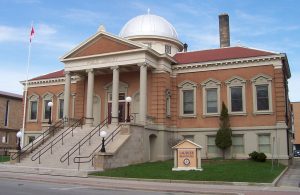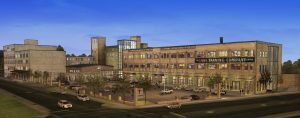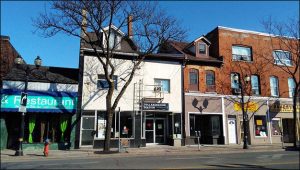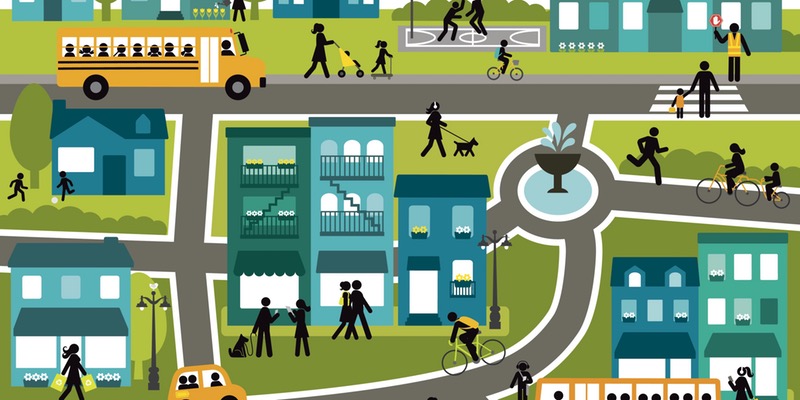Adaptive Reuse for Community Benefit
Ontario’s mid-sized cities are changing. Population growth, urban renewal, new transit systems, and growing economies are bringing newfound energy to cities across the province. One challenge for these cities is to find ways to reuse and reinvent spaces that may no longer serve the purpose for which they were intended originally. To better understand how certain communities are tackling their specific renewal challenges, Evergreen commissioned Civicplan to undertake a study on models of the adaptive reuse of space for community benefit.
Over 25 percent of the province’s population lives in cities with populations between 50,000 and 500,000. Many of these mid-sized cities have long histories and are significant regional commercial and economic centres. Yet they often do not receive the sort of attention that our province’s larger cities do from researchers and senior levels of government.
These mid-sized cities face many specific challenges related to urban renewal, affordable housing, economic diversification, and community mobilization. These are difficult, complex problems, and the means to address them are not necessarily clear. Studying and understanding these problems in the context of mid-sized cities is especially important because their capacities and context are different from those of larger cities. For example, they often lack the revenue tools or large-scale commercial/institutional/governmental sectors to share in the cost of growth and renewal.
Civicplan’s work in this area provides insights into models of redevelopment in Brantford, Peterborough, Kitchener, and Hamilton. Significant to all of these case studies is the reinvigoration of space. These models have worked to transform under-used or sometimes derelict spaces, turning them into community hubs. They show how cities can capitalize on their heritage to spur positive change and create the sorts of innovative spaces that are so central to modern cities.
Brantford – Wilfrid Laurier and Downtown Renewal

In just under two decades, downtown Brantford has undergone a remarkable transformation and renewal. Central to this change is the opening of a satellite campus of Wilfrid Laurier University in the city’s downtown. The rejuvenation of Brantford’s downtown began with the City and the University taking a gamble on the redevelopment of a single heritage building, the Carnegie Library. Today, with 21 buildings and over 3000 students and growing, this campus has helped spur local economic growth and downtown resurgence.
Peterborough – The Mount and Sustainable Affordable Housing

Like every city in Ontario, Peterborough has far fewer affordable housing units than it needs. The Mount represents an attempt by local anti-poverty advocates to provide more affordable housing to the community, and to do so in a way that is financially sustainable. The leaders behind the Mount have taken a large, unoccupied heritage building, a former convent, and turned it into both homes and a hub for the community. Its affordable housing units are subsidized by revenue from programming and rentals. Much of the completed and planned renovations and upgrades have been financed through innovative tools, like social bonds and mortgage backed bonds. The Mount is now an important community hub for housing, food, art and culture, and health and social services.
Kitchener – Tannery, Communitech, and Economic Diversification

In the 1990s and 2000s, while neighbouring Waterloo exploded as a high-tech centre, Kitchener struggled with economic revitalization and diversification, moving away from its industrial past. Local government and business leaders worked together on a successful strategy to drive entrepreneurship and economic growth in the downtown core that has reinvigorated that city. Central to this project has been the redevelopment of the Lang Tannery in 2009 and the creation of the Communitech Hub. Since 2009, when the Tannery was completed, nearly 2000 technology start-ups have emerged in the region, with the Communitech Hub supporting many of them. Downtown Kitchener’s innovation district has continued to grow and has become home to major international and local tech firms such as Google and Desire2Learn.
Hamilton – Evergreen and Community Infrastructure

Hamilton has undergone significant change and revitalization in recent years. While this is overall a positive development for the city, it is not without its challenges. Issues arising from gentrification and changing neighbourhoods have created problems for some communities. Evergreen started its Hamilton City Building Action Campaign in 2014 to help community groups and individuals mobilize, organize, and participate in the shaping of community and neighbourhood renewal. Its initial focus was on the City’s proposed waterfront redevelopment, creating a neutral space for municipal officials to host public discussions. Evergreen’s Community Storefront has now become a hub for many local groups and organizations to gather and share ideas on a wide range of civic topics.
Lessons Learned
Mid-sized cities across the province face unique challenges as compared to their larger counterparts. In some cases of adaptive reuse for community benefit there are similar ingredients for success, but with distinctly local flavours that are central to a sustainable outcome. Civicplan’s study will offer insights and key lessons for projects that can assist other mid-sized cities spur positive and concrete change in their communities.
Read the report here.

